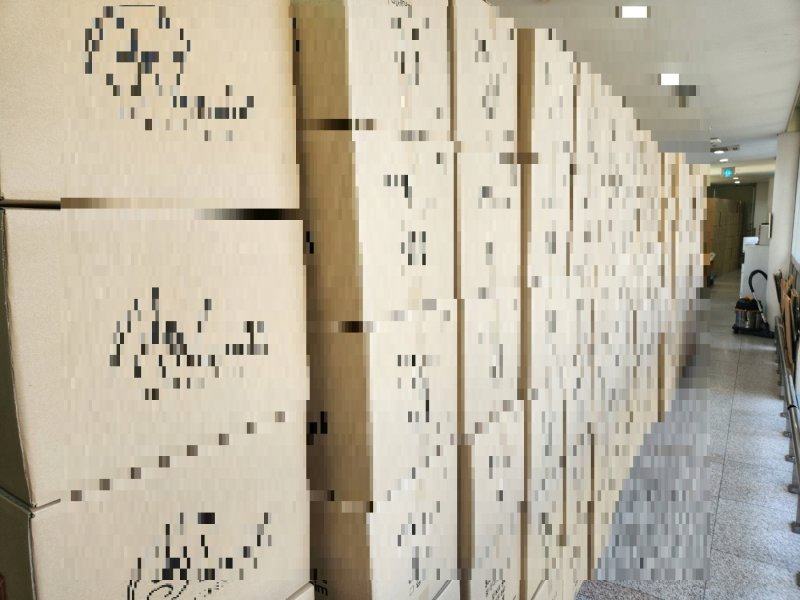
A full recovery from COVID-19 begins thanks to the lifting of the obligation to wear indoor masks at public transportation pharmacies. It may not be immediately, but citizens are expected to wear fewer and fewer masks after some time. No-no masks are already common overseas.
Despite the good news, Mr. Yoo was full of worries. Because I’m the owner of the mask factory. Yoo, who met at a mask factory located somewhere in Seoul on the 19th, said he was worried about what to do in the future. Yoo said it would be socially meaningful to take off the mask as the COVID-19 disease gradually disappears, but it is not only good news for the mask manufacturing industry.
■Warehouse-filled mask
On that day, Yoo showed a warehouse in a mask factory with about 66㎡ and 20 pyeong. There were piles of boxes stacked well over the height of a person in the warehouse. Soon, Yoo took out a box and showed me what was inside. There were 500 KF94 masks in the box.
Yoo explained that since the use of outdoor masks began to be lifted last summer, mask stocks began to accumulate one by one in the warehouse, and that as inventory accumulates, production cannot be maintained, so we are reducing sequentially.
There are a total of two mask production machines in Yu’s factory. If all of these are operated, 25,000 masks can be produced a day. In the early days of COVID-19, all of them were operated, but now only one machine is operated to make 12,000 masks. The other car was sitting in one corner of the factory, just dusting up. He said he no longer has enough space to store inventory. Until half a year ago, he had vague expectations that all of them would be shipped someday, but now that the obligation to wear masks on public transportation has been lifted, he doesn’t even expect it.
The situation has come this far because of the excessive supply of masks. When the shortage of masks occurred due to COVID-19, everyone set up a mask company.
According to the Ministry of Food and Drug Safety, a total of 1,512 mask producers were registered with the Ministry of Food and Drug Safety as of December last year, an increase of about 11 times compared to 137 in January 2020, when COVID-19 began.
As production increased, the shortage of masks in the early stages of COVID-19 disappeared, but now only bleeding competition remains, Yoo said, and Yoo sighed, “It is not easy to accept the current situation from the standpoint of producing masks before COVID-19.”
Mr. Yoo has to deliver products at a price similar to the original price even if they are made. He mentioned that even if he sells masks, it is not easy to pay electricity and labor costs.
In fact, Company A produced 3.69 million masks in 2020 and made 3 billion won in sales, but last year, it produced 1.83 million masks and made only 600 million won in sales.
